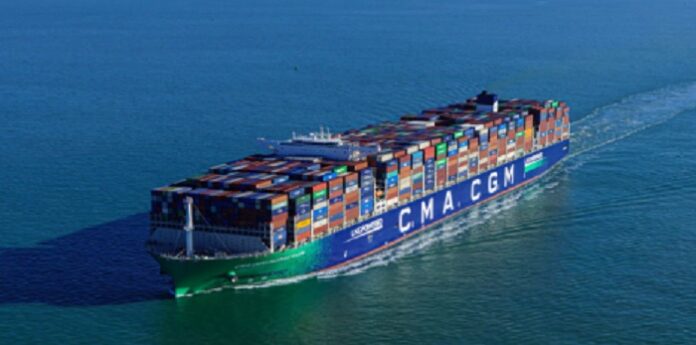
-
Asia-US and Asia-Europe spot rates are back to December 2019 pre-pandemic level after last week’s surge, but Drewry says rates on other segments and contract markets still declining
-
Transpacific spot rates had slid 80-84% in the year to May 31, but Drewry dismissed this as a correction from super-inflationary trends in the COVID-19 period, not a collapse
-
On the transatlantic route, which has different dynamics and vessel sizes from the larger East-West routes connecting Asia, spot rates are still 62% higher than pre-pandemic levels
Transpacific and Asia-Europe rates on container shipping spot markets have returned to December 2019 pre-pandemic levels following last week’s surge, but Drewry says other segments and contract markets will still decline.
Rate trackers estimate transpacific spot rates had slid 80-84% in the year to May 31, but Drewry said this was a correction from super-inflationary trends in the COVID-19 period, not a collapse. The factors behind the recent crazy rates – capacity shortages, strong demand and port congestion – have all gone, so the rates have returned to previous levels.
To put the 80% year-on-year reduction in perspective, the weekly Drewry World Container Index also provides a comparison, the supply chain advisor said.
“In fact, when compared with December 2019, the latest transpacific spot rates are broadly the same! You could say that spot rates on this route have fully normalized,” said Drewry, adding some transpacific spot rates are lower than these.
Drewry said its rate assumptions are using average “all-in rates” including both origin and destination terminal handling charges and fuel surcharges. It cautions the transpacific spot rates comparison does not take into account the inflation many economies have experienced between 2019. “And now, if you take into account inflation, then spot rates are actually lower than in 2019,” Drewry said.
The transatlantic route is different, as it does not follow the trends of the transpacific and Asia-Europe rates, Drewry said. On this route, which has different dynamics and vessel sizes from the larger East-West routes connecting Asia, spot rates are still 62% higher than pre-pandemic levels.
Drewry noted that rates they had dropped 47% in the year to May 2023, but it forecasts that transatlantic westbound rates have further to fall.
“So, if you ship mainly using the spot market, you should consider these findings that transpacific spot rates have now “fully normalized”, and transatlantic rates have only partly normalized.
Judah Levine, head of research at Freightos, attributed last week’s rate surge to June general rate increases (GRIs), reduced capacity, some slowdown in West Coast traffic due to dockworkers’ actions before last Friday’s tentative contract agreement between their union and employers, and surcharges for ships passing through drought-hit Panama Canal.
But soft demand for goods continues to weigh on freight markets and keep downward pressure on rates, Levine said.
Last week, Freightos Baltic Index Asia-US West Coast prices (FBX01 Weekly) rose 19% to US$1,569/FEU, 85% lower than the same time last year. Asia-US East Coast prices (FBX03 Weekly) climbed 12% to $2,626,/FEU, 81% lower than same-week rates last year.
In contrast, Asia-N. Europe prices (FBX11 Weekly) fell 9% to $1,201/FEU, and are 89% lower than for this week last year.
Transpacific ocean rates climbed sharply last week on June GRIs, with Asia-US West Coast prices increasing $250/FEU or 19%, and rates to the East Coast climbing 12%.
In Europe, there was a slight rebound in ocean import volumes in April that was attributed by some to a modest start to restocking. Asia-Europe ocean rates remained subdued last week at 11% below 2019 levels, though daily rates for this week may show signs of some 10% rebound to start the month, Levine said.
Asia-Mediterranean volumes remained strong, up 20% y-o-y, likely accounting for firmer rates on this lane than on other major trades. Prices of $2,364/FEU last week remain 28% higher than in 2019, making the lane’s benchmark the only elevated relative to pre-pandemic levels.
Drewry’s composite World Container Index had shed 5% to $1,592.25 this week and dropped 79% from the same week last year. The index reached $10,377/FEU September 2021 but is 41% lower than the 10-year average of $2,688, indicating a return to more normal prices, but remains 12% higher than average 2019 (pre-pandemic) rates of $1,420.
Shanghai-Los Angeles and Shanghai-New York rates dropped 8% each to $1,746 and $2,733/FEU. Rates on Shanghai-Rotterdam fell 7% to $1,349/FEU. Similarly, Rotterdam-New York rates slid 5% to $3,195/FEU. Rates on Los Angeles-Shanghai and Shanghai-Genoa hovered around the previous week’s level.
RELATED READ: Asia-Europe box rates dip 80% on soft demand




